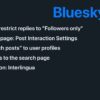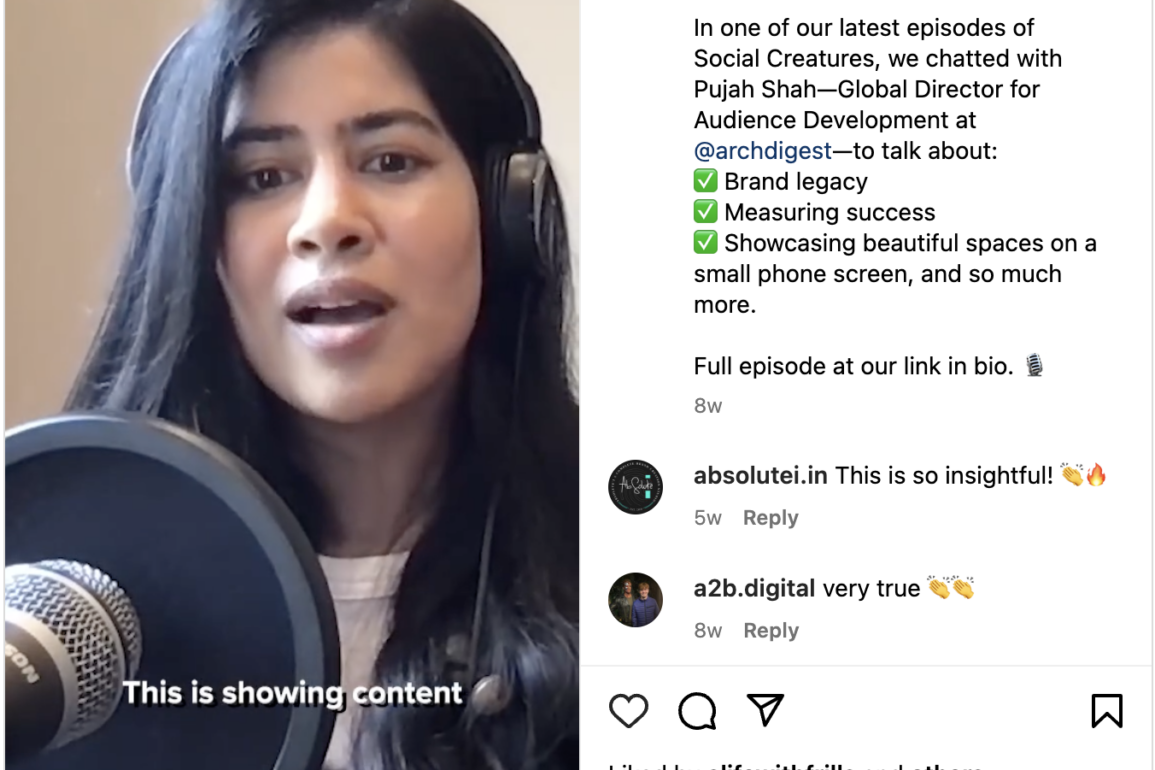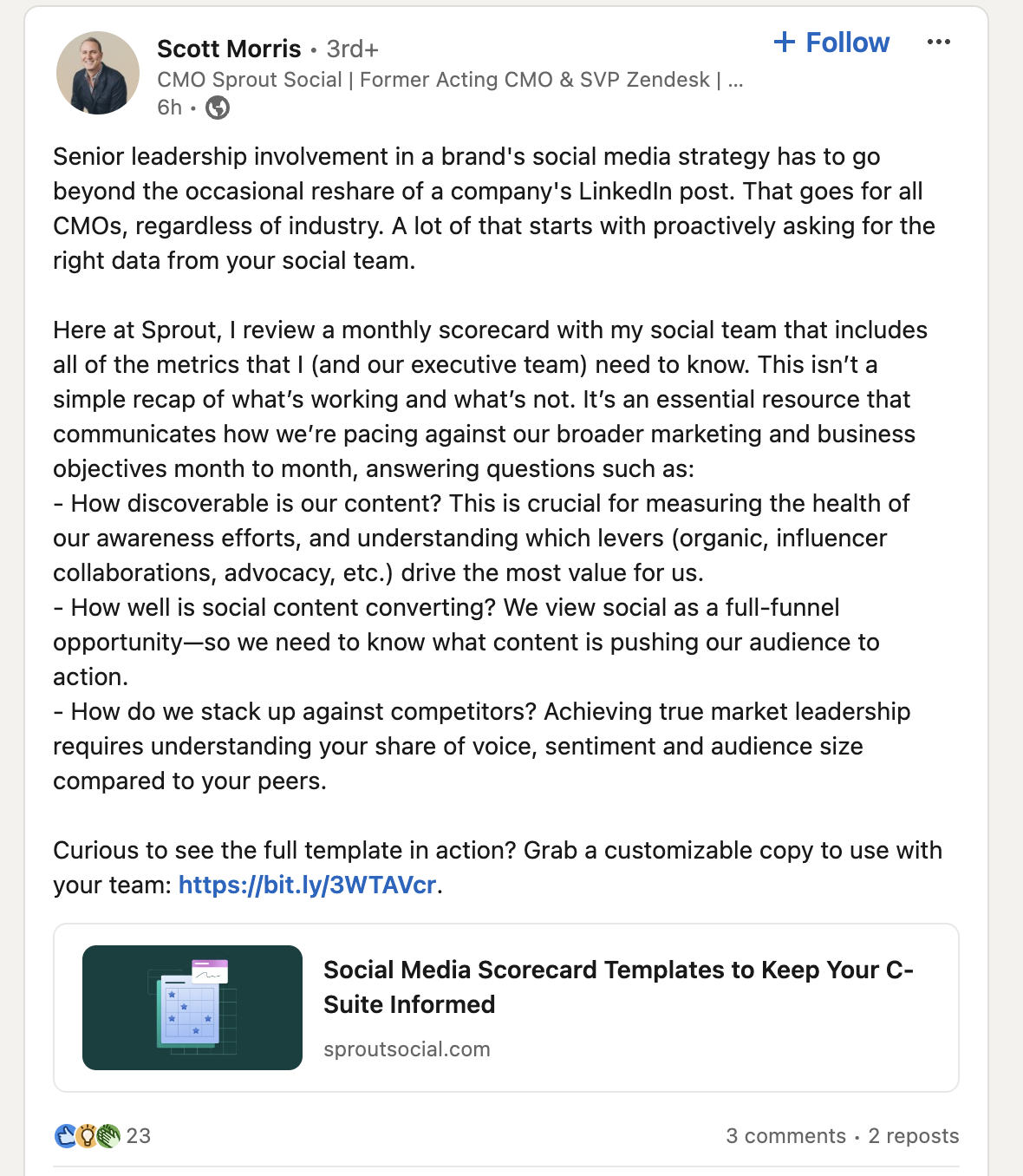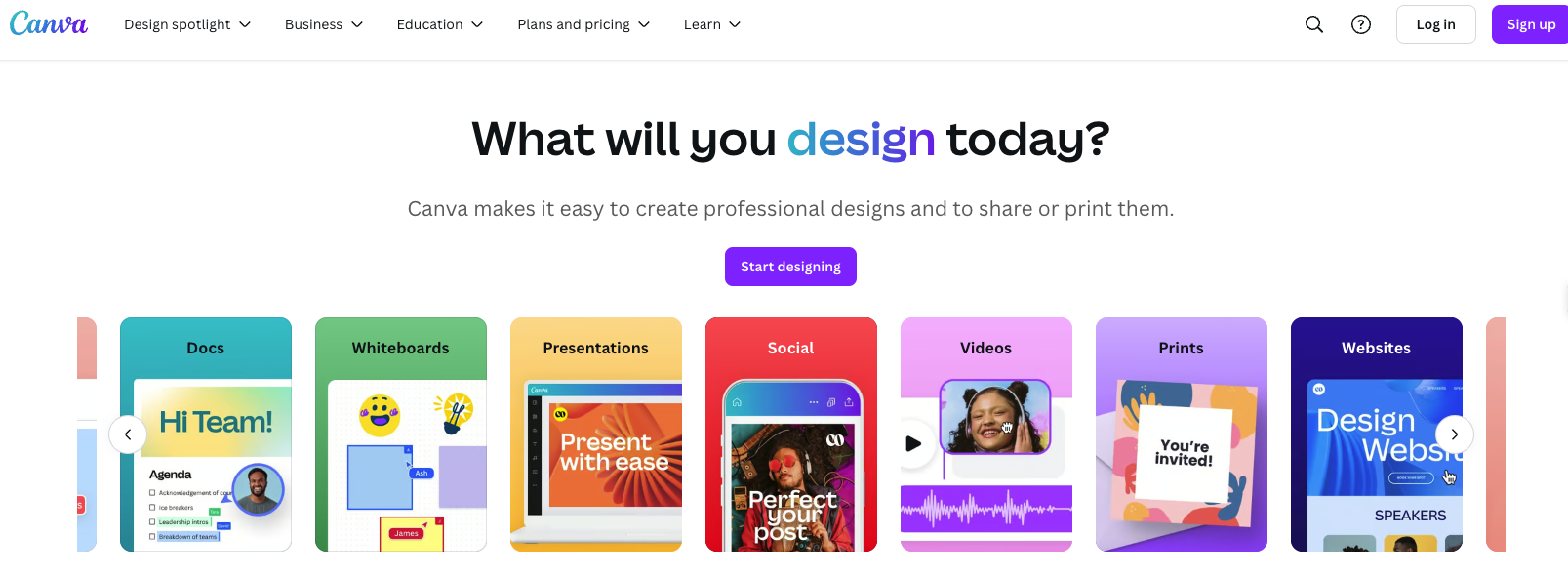There are some many different types of social media content to create and enjoy, from carousels to GIFs to videos. It’s not as simple as creating a one-size-fits-all post to publish across platforms—you have to tailor it to the unique needs of your business and audience.
To successfully manage social media content creation across networks, you need to maintain a consistent brand voice, adapt to distinct formats and meet (or exceed) audience expectations. In this guide, we’ll highlight top trends, along with tips for social media content creation to help you optimize your strategy and workflows. We’ll also share content creation tools you can use to support your creativity.
What is content creation in social media?
Content creation for social media is the process of concepting, producing and sharing social posts that are tailored for social networks to engage audiences. It involves creating well-designed, valuable content that fits the social network’s sizes and formats, your brand voice and your business goals. Effective social media content creation requires understanding platform-specific nuances, audience preferences and trendspotting. Some content types include:
- Instagram Reels and carousels
- YouTube Shorts
- X (formerly known as Twitter) posts
- LinkedIn posts
- TikTok video and slideshows
Top trends in social media content
As new social networks and technologies emerge, the content creation industry evolves—and consumer preferences are changing in lockstep. In The 2024 Social Media Content Strategy Report, we surveyed over 4,500 consumers in the US, UK, Canada, Australia and Ireland to learn more about what consumers want from brands across various social networks. Let’s review some of the popular content creation trends for social media.
AI social media content creation
Artificial intelligence (AI) enables marketers to increase the speed of social media content creation. For example, you can use AI to support content ideation development, brainstorming video content ideas and editing copy. Beyond supporting content creation, AI-driven tools are transforming marketing because these emerging technologies also provide insights through data and analytics. By using AI to aggregate and analyze data quickly, you can better understand your audience in real time and craft personalized content that resonates with them. For example, by monitoring analytics you can determine audience sentiment and gauge emotional perceptions of your content. AI is also used with scheduling posts at optimal times and maximizing visibility and interaction across different platforms.
Collaborating with creators and influencers
Teaming up with creators and influencers amplifies brand reach and credibility, particularly for social media campaigns. Forming long-term partnerships with content creators and influencers can help your brand develop trust and rapport. By attracting their followers’ attention with compelling content, your partners can introduce your brands to new audiences in a meaningful, authentic way. When we talk about creators and influencers, consumers might envision an unboxing video on TikTok or YouTube, but that’s just one example of how they can be involved.
For example, a creator can assist with Instagram caption ideas and other social media copywriting needs. Incorporating influencers in the conception stage for campaigns can make the content feel more authentic and true to their unique niche.
Edutainment
According to our report, 66% of social users find “edutainment” to be the most engaging of all brand content—surpassing memes, serialized content or skits. Edutainment merges education with entertainment, creating content that’s informative, enjoyable and memorable.
Brands using edutainment to teach audiences about their products and services can help their businesses earn more revenue. The report found consumers are most likely to buy a product on social media if a brand posts content that shows their product or service in action.
Multi-channel network strategies
In our report, we asked consumers which platforms brands should stay away from and their #1 answer: none. Each social media network offers opportunities for connecting with your target audience and growing your community. Social media users flock to every network for different needs and purposes. But this doesn’t mean your brand needs to have an account for every network. You should meet your audience where they are. Be intentional with planning your social media content by implementing a multi-channel network strategy that addresses a set number of channels. Effective multi-channel strategies improve brand presence and audience engagement by delivering cohesive and tailored content experiences.
10 tips for social media content creation
1. Use AI social media content creation tools
Using AI social media content creation tools can automate routine production tasks and workflows. For example, use AI for scheduling posts and creating performance analysis reports. Save time improving social copy and slating in captions for videos through AI editing tools. Sprout Social has AI functionalities built throughout, serving as your assistant where you most need it. You can conduct audience research via Sprout Social Listening to inform the direction of your content. Then use our AI Assist to help generate social copy and use Optimal Send Times to schedule posts when your audience is most active. By leveraging AI, you can focus more time and effort on being creative, ensuring that their content stands out in an oversaturated digital landscape.
2. Take a network-specific approach
You can definitely repurpose content, but it’s important to consider each social network’s nuances. Adopting a network-specific social media content strategy involves tailoring content and engagement tactics for each network and user base. What works on Instagram might not resonate on LinkedIn, as each caters to different expectations and hosts different content types. By customizing content to fit the specific context of each network, brands can maximize their impact and foster stronger connections with their audience. You can also adapt the same piece of content for two different networks. For example, let’s say you have a podcast. You could post a long-form video on YouTube and publish 30-45-second clips from the episode on TikTok or Instagram Reels. We do this for our podcast, Social Creatures, by sharing clips on our Instagram page.
3. Consider quality and alignment over quantity
Standing out becomes more challenging with social media saturation. Consumers are seeking quality over quantity when it comes to content. Our report found 91% of social users say production value and budget impact their engagement. Instead of filling their timelines and feeds with tons of posts, focus on quality content that provides value on the right channels for your audience.
4. Maintain a social media content calendar
Maintaining a calendar is a staple in social media content creation because it helps you organize and plan effectively. A social media calendar enables you to make sure you’re publishing enough content across networks, while also giving you the flexibility to address timely trends or changes. A tool like Sprout can enhance your content calendar process by providing a platform where you can schedule posts, track their performance and manage all your content in one place. Sprout’s Publishing calendar enables you to visualize your content strategy over days, weeks and months, making it easier to maintain consistency across all social media channels.
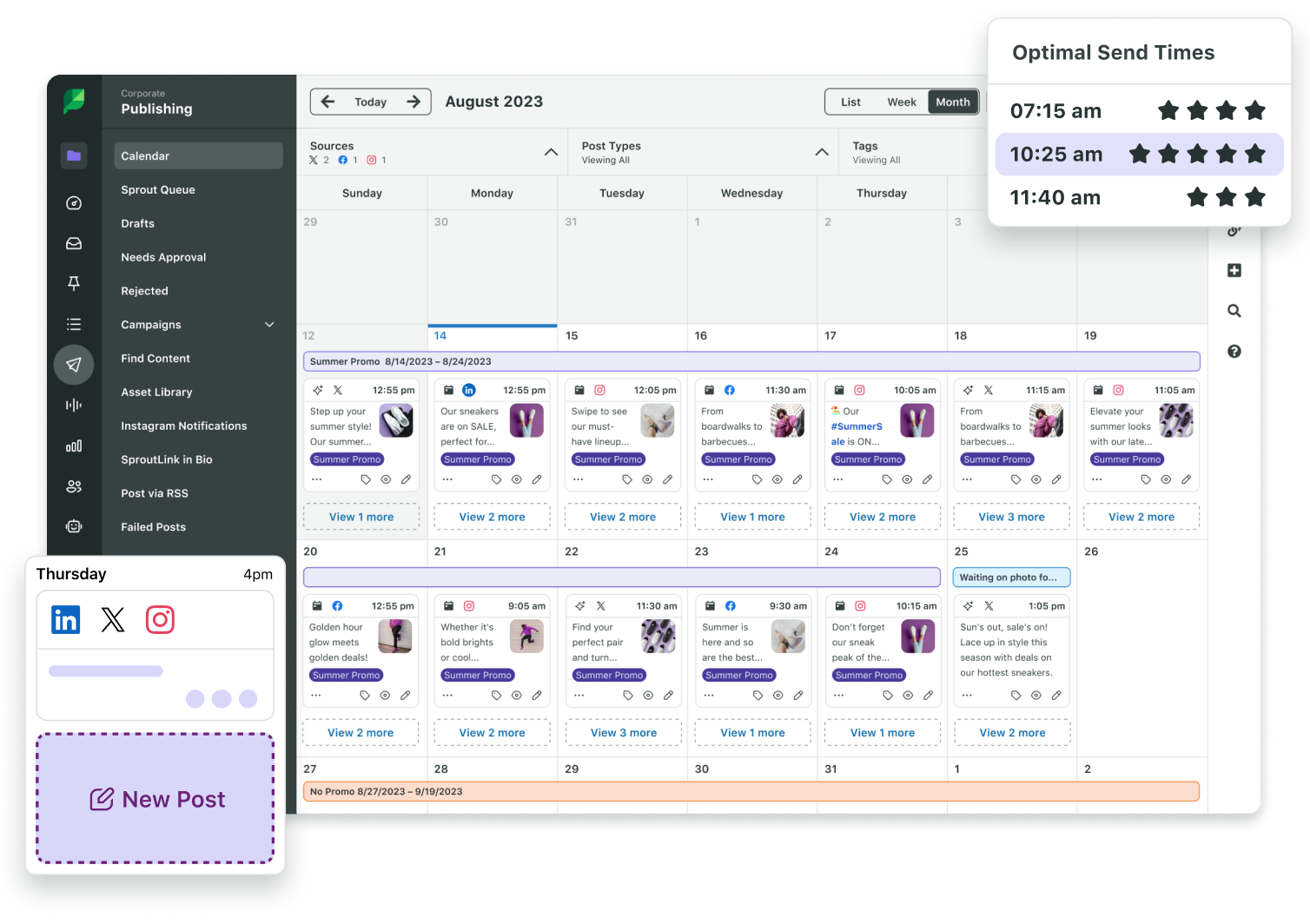
5. Make accessible content
Social media accessibility creates an inclusive experience and extends your content to a broader audience. Add subtitles to videos, write alt text for images and ensure content is navigable for assistive technologies like screen readers—these are just a few examples of how you can incorporate accessibility. It also helps to use tools that incorporate accessibility. For example, our Generate by AI Assist is an alt text generator built into Sprout’s Publishing platform for certain plans. By championing accessibility, you enhance user engagement by making your content available to people living with disabilities.
6. Recruit internal creators and brand ambassadors
Encourage employees to share their experiences and perspectives related to your brand on their personal social media channels. Using internal creators and brand ambassadors will significantly amplify your brand’s reach. Employee advocacy content provides genuine content that can give a look inside your company’s culture and product and services. It can also provide an avenue for thought leadership and strengthen your brand’s community engagement. Sprout’s Employee Advocacy solution lets employees share brand content on their personal accounts while staying compliant with pre-approved copy.
7. Use analytics to refine your social media content creation strategy
Social media content creation is both an art and science. Monitoring social media analytics will help you understand the impact of your efforts and refine your content strategy. By defining key performance indicators (KPIs) and tracking metrics like reach, impressions, click-through rate or conversion rate, you can identify what types of content perform best. You can use these insights to inform ideas for new content or adjust your posting schedule and content mix. This data-driven approach also optimizes your social media campaigns for better performance and return on investment (ROI). Social media management platforms like Sprout offer social media analytics tracking for major networks including TikTok, YouTube, LinkedIn, Instagram and X (formerly known as Twitter).
8. Use social listening and sentiment analysis for audience preferences and trendspotting
Social listening and sentiment analysis tools provide invaluable insights into what’s happening on social media regarding current trends, conversations and public opinion. Through Sprout’s Social Listening solution, you can monitor mentions, hashtags, phrases and keywords to identify emerging trends. Then you can use these insights to adjust your content calendar to include relevant topics that engage your audience. You can also use Sprout for social media sentiment analysis to track audience preferences and feedback about your brand. Using social listening and sentiment analysis supports a proactive approach to social media content creation by making sure your content is timely and relevant.
9. Experiment with each network’s unique features
Each social media network offers unique features that can enhance your content’s appeal. For instance, Instagram’s Stories and Reels offer creative ways to engage visually with followers while LinkedIn’s poll feature can be used to gather opinions, increase engagement and generate conversations in your industry. On TikTok, you can use TikTok live to engage with your audience in real-time. And even brands on Threads are testing the platform’s various features to shape a unique brand experience. Experimenting with features allows you to cater to the network-specific preferences of your audience.
10. Conduct competitive analysis to benchmark your content
Competitive analysis is essential for understanding how your content stacks up against your industry contenders. See what types of content your competitors are posting, their engagement rates and their audience growth. By benchmarking against your competitors, you can identify content gaps and opportunities for differentiation, helping you refine your strategy and position your brand more effectively in the market. You can conduct competitive analysis manually, but Sprout’s suite of competitive reporting and analytics tools automate the work for you.
Content creation tools for social media
There are many options available to help with social media content creation, from ideation and production to tracking performance. Let’s review some tools you can use to support your efforts.
Sprout Social
Sprout Social enables you to streamline content scheduling, publishing and analytics across multiple platforms. Sprout integrates with major networks like Instagram, LinkedIn, Facebook, YouTube, Threads and X (formerly known as Twitter) so you can manage content for all of your channels in one place. You can use Sprout’s Asset Library to create assets within our platform or you can import from other social media content creation tools like Canva, Dropbox and Google Drive. Plus, use our AI-powered capabilities to generate captions and alt text, and automatically schedule posts when your audience is most active through Optimal Send Times.
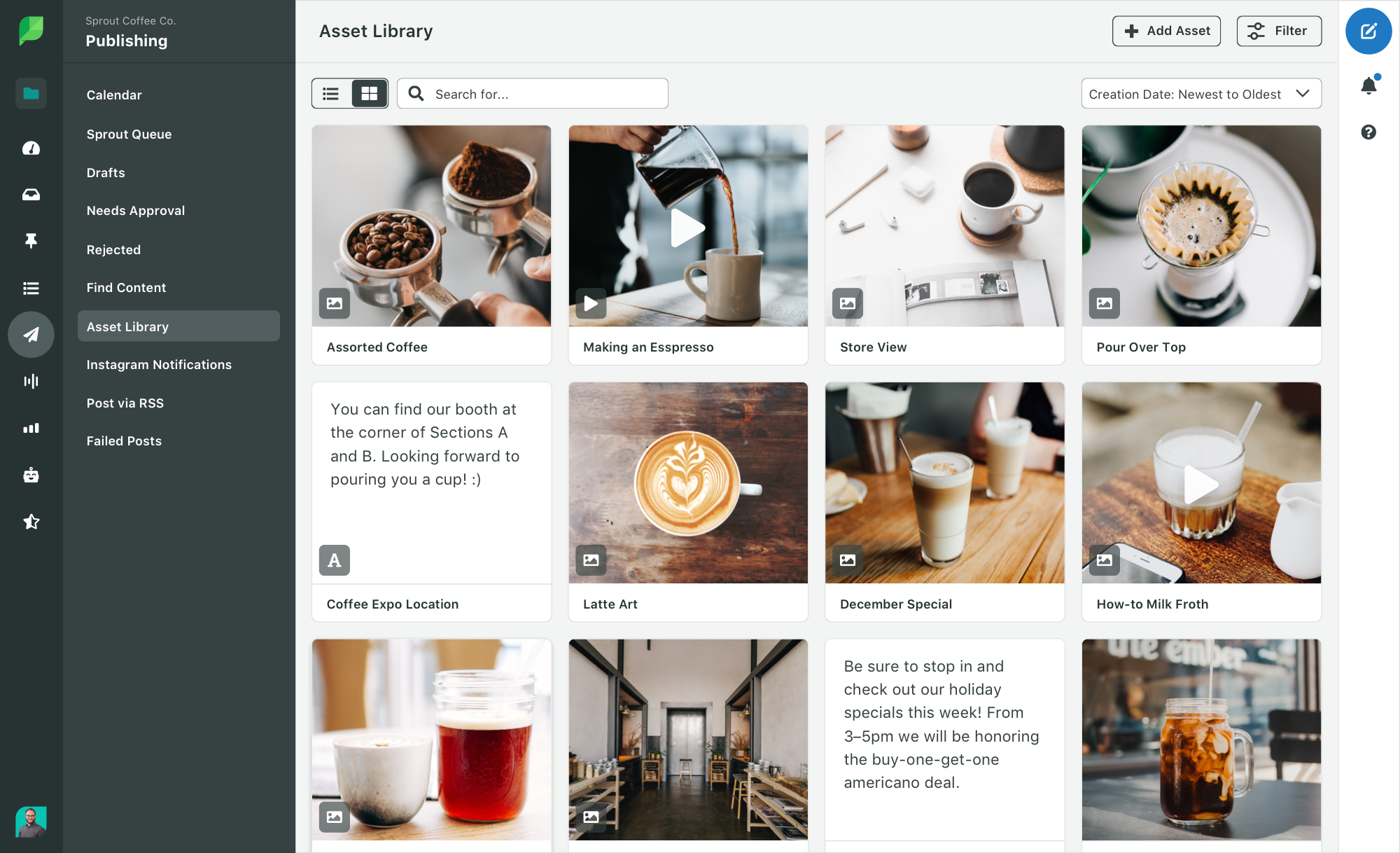
Canva
Canva is a user-friendly graphic design tool that can help you create animations, video graphics and carousels. It simplifies creating visually interesting designs by providing templates, drag-and-drop design elements and the ability to upload brand assets. Canva is useful for creating consistent branding across various social media channels.
Native editing tools
Social media networks have native tools you can use to support your content creation. For example, YouTube Studio offers features for editing and scheduling videos. You can also track basic analytics for video performance and viewer demographics to refine your content strategies. YouTube Studio also includes tools for monetization and copyright management, making it a popular platform for video creators.
Audacity
Audacity is a free, open-source audio editing software you can use to produce high-quality audio for videos and podcasts. You can record, edit and mix audio tracks using a range of effects and tools. When looking to enhance your multimedia content on a budget, Audacity provides a cost-effective solution for producing clear audio.
Free templates
We know content creation is complex. That’s why we created guides, templates and tools to support your process. Here’s a few to kickstart your content creation for social media:
Learn more about social media content creation preferences
Working with influencers, leveraging AI tools and implementing network-specific strategies are popular in the modern social landscape. Marketers must consider providing quality content on the most optimal channels to stand out in the crowd. Using tools like Sprout will equip you to produce content faster and learn more about your audience. But you’ll also need to understand how today’s consumers are using LinkedIn, YouTube, Instagram, TikTok and other major networks. Learn more about emerging trends and consumer preferences in the 2024 Social Media Content Strategy Report: A Playbook for Every Network.

